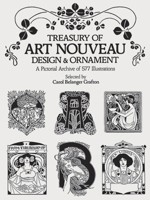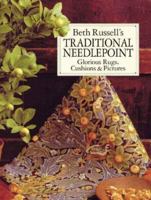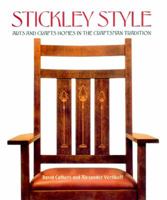Arts & Crafts Stencilling
Select Format
Select Condition 
You Might Also Enjoy
Book Overview
In the Arts & Crafts tradition, decorative stencilling -- on walls, pillows, draperies, or furniture -- is made accessible and fresh with these classic stencil patterns from the Arts & Crafts period. Using time-tested techniques, decorative stencil painting can be applied to every room in the house. With plant and flower patterns for the kitchen, formal ornaments for the living room, animals and bugs for the family room, children and ducks for the nursery, and sea life for the bathroom, they can also be mixed and matched to suit a particular taste and d cor. This treasure trove of Arts & Crafts stencil patterns is based on articles originally published in The Journal of Decorative Art. When W. G. Sutherland first published this book back in 1910, it was intended for the professional decorator. But today's do-it-yourselfer has skills that far surpass the imagination of Mr. Sutherland in the early twentieth century. Turn-of-the-century methods are described thoroughly and give an excellent background in the art of stencilling for ornamental detail. In addition to discussing supplies and preparations, Sutherland shares trade secrets for managing corners, applying continuous borders and friezes, and working up ceiling treatments and "all over" patterns -- all the while working efficiently and quickly. Arts & Crafts Stencilling is the perfect companion for a bungalow update or for a contemporary Arts & Crafts-style home. W. G. Sutherland was a British sign maker and decorative artist of the late nineteenth and early twentieth century. He was a frequent contributor to The Journal of Decorative Art, published in Great Britain. This description may be from another edition of this product.
Format:Paperback
Language:English
ISBN:1586852523
ISBN13:9781586852528
Release Date:January 2008
Publisher:Gibbs Smith
Length:92 Pages
Weight:0.94 lbs.
Dimensions:10.5" x 0.2" x 8.3"
Customer Reviews
5 customer ratings | 5 reviews
Rated 5 starsDetail is the Key
By Thriftbooks.com User,
This book is a wonderful piece of instruction and source of pattern! Lots of detailed how-to information and a wealth of stylish forms, with suggestions of how to combine them to create your own individual designs for large as well as small projects. A really excellent source.
0Report
Rated 4 starsInspiring ideas, and good for brainstorming
By Thriftbooks.com User,
As the information on the book flap says, this book was first published in 1910 for the professional decorator. "Today, Sutherland's time-proven methods give do-it-yourselfers a thorough education and an excellent background in the art of stencilling for ornamental detail." All that is accurate, I think. The book does a great job of explaining how to think about stencilling a room or window, and the author also has a good...
0Report











































